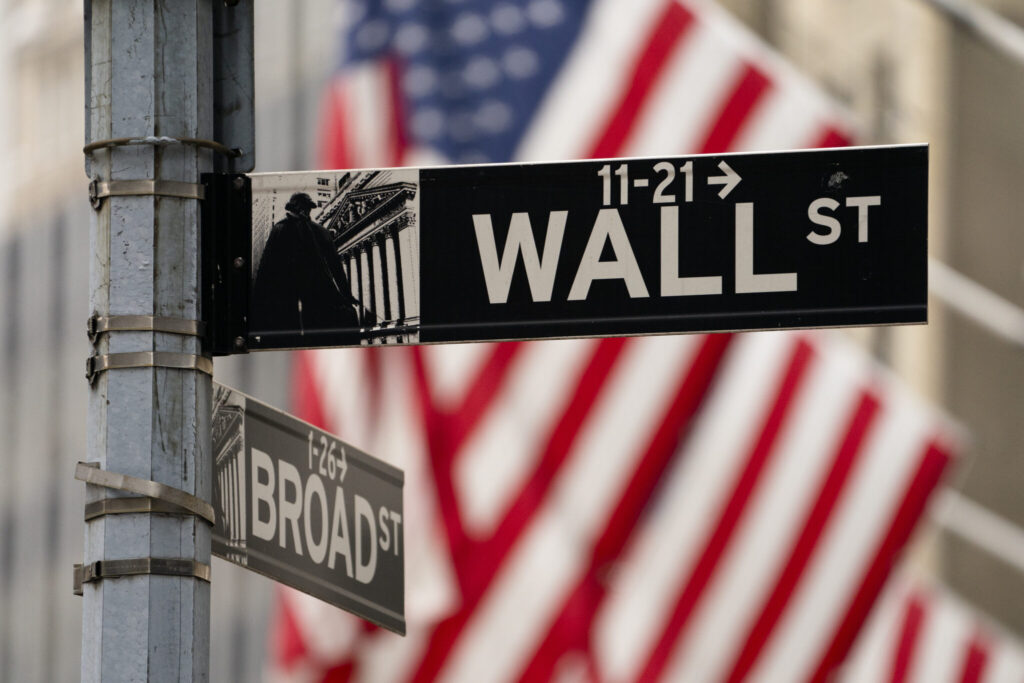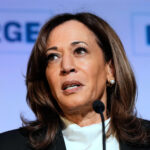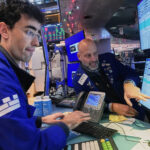U.S. stock indexes struggled for direction on Wednesday as investors worried about a potential recession, a day after comments from Federal Reserve Chair Jerome Powell fueled bets of sharper rate hikes. Powell told U.S. lawmakers on Tuesday the Fed would likely need to raise interest rates more than expected as it seeks to tame inflation, sending key U.S. stock indexes down more than 1%, with the benchmark S&P 500 (.SPX) logging its biggest percentage decline in two weeks. The Associated Press has the story:
Wall Street Stocks steady after painful tumble
Newslooks- NEW YORK (AP)
Stocks are steadying on Wall Street Wednesday, a day after sinking to one of their worst days of the year, but sharper swings could be ahead later in the day.
The S&P 500 was virtually unchanged in early trading. The Dow Jones Industrial Average was up 2 points, or less than 0.1%, at 32,858, as of 9:35 a.m. Eastern time, while the Nasdaq composite was inching up by 0.1%.
Stocks are coming off a sharp drop the prior day after the head of the Federal Reserve warned it could speed up its hikes to interest rates if pressure on inflation stays high. Such hikes can ease inflation by slowing the economy, but they also hit prices for stocks and other investments and raise the risk of a recession in the future.
The Fed’s chair, Jerome Powell, is scheduled to speak again, before a House committee on Capitol Hill on Wednesday morning. At the same time, a report will show how many job openings were advertised across the country in January. Such data has become excruciatingly scrutinized on Wall Street because they can give a clue about where wages are heading for workers.
Strong wage gains are good for workers struggling to keep up with high inflation, but too-high growth could cause a vicious cycle that only pushes inflation higher, the Fed worries. The number of job openings have become much more important on Wall Street because when it far exceeds the number of unemployed workers, employers may have to offer bigger wage increases, the thinking goes.
A separate report Wednesday morning suggested hiring is still much stronger across the economy than expected. Private employers added a net 242,000 workers to their payrolls last month, according to ADP. That was an acceleration from January’s hiring and more than expected.
It could offer a sneak peek of what the U.S. government’s more comprehensive report on hiring will show. It’s scheduled for Friday, and a jaw-dropping number for that report last month was what got Wall Street’s worries going that inflation may not be cooling as quickly and smoothly as hoped.
Besides last month’s gangbusters jobs report, other data showed surprising strength in everything from spending by U.S. consumers to inflation itself at multiple levels. That caused stocks to drop and bond yields to jump in February. It was a reversal from a rally at the start of the year, born from hope that inflation would continue to cool and get the Federal Reserve to take it easier on interest rates.
Instead, Wall Street got a pivot in the opposite direction it was hoping. Powell said Tuesday that the strong data will likely mean rates will ultimately have to go higher than earlier expected. He also said the Fed may accelerate the pace of its hikes, a turnaround after it had just downshifted the size of its increases last month.
Traders are now largely expecting the Fed to hike its key interest rate by 0.50 percentage points later this month. Last month, it ratcheted down to 0.25 points from earlier increases of 0.50 and 0.75 points.
Expectations for a firmer Fed have been most clear in the bond market, where yields have shot higher in recent weeks. They eased a bit Wednesday, giving the stock market some breathing space.
The yield on the 10-year Treasury, which helps set rates for mortgages and other important loans, fell to 3.91% from 3.97% late Tuesday.
The yield on the two-year Treasury, which moves more on expectations for the Fed, slipped to 4.97% from 5.02% late Tuesday. It’s still near its highest level since 2007.
But yields on shorter-term Treasurys still remain far above those for Treasury maturing many more years in the future. That’s an unusual occurrence and one that Wall Street sees as a fairly reliable signal for an upcoming recession.
Based on where traders are betting yields will be in the future, it appears the market is implying inflation will continue to run hot, the Fed will quickly ramp up rates and then will reduce them only gradually afterward, according to Jonathan Golub, chief U.S. equity strategist at Credit Suisse. He also said the bond market appears to be signaling a recession could begin in August 2025.
For the moment, the economy still looks resilient despite the hikes to interest rates the Fed has already thrown at it. The Fed’s key overnight interest rate has jumped to a range of 4.50% to 4.75%, up from virtually zero at the start of last year, amid the fastest flurry of hikes in decades.
The question is how long a strong job market and spending by U.S. consumers can prop up other weakening areas of the economy, especially if the Fed keeps rates higher for longer as it’s been warning.







